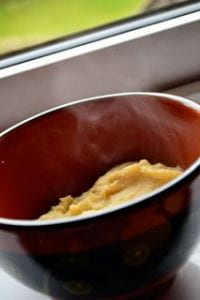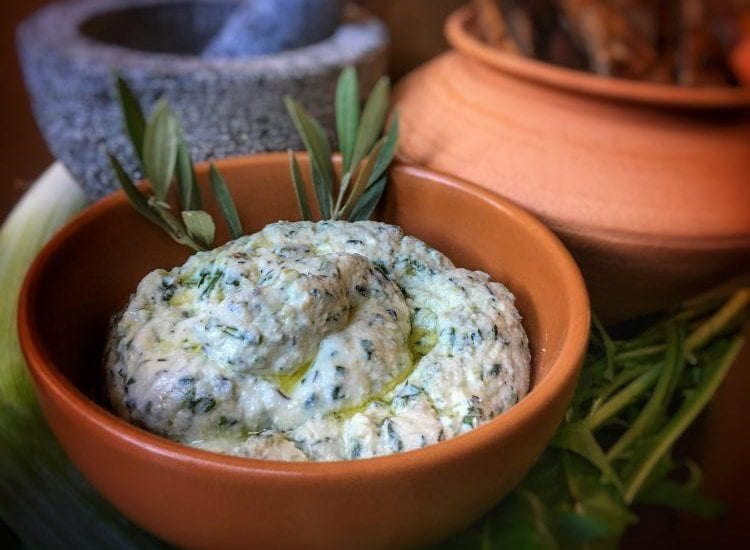Culina Quarantina: A Series of Roman Recipes
By Alicia Lopez
Recently, I’ve been doing a lot of cooking and baking to help pass the time in quarantine, so I decided to look into what cooking would have been like in Ancient Rome. Here are some of my favorite ancient recipes to help get you through quarantine. Bonam fortunam! You can find previous recipes here.
Roman Porridge (serves 1)
From Cato the Elder’s De Agri Cultura #86
Graneam triticeam sic facito. Selibram tritici puri in mortarium purum indat, lavet bene corticemque deterat bene eluatque bene. Postea in aulam indat et aquam puram cocatque. Ubi coctum erit, lacte addat paulatim usque adeo, donec cremor crassus erit factus.
“Make porridge in this way. Pour a half-pound of pure wheat into a clean bowl, wash well and rub away the shell (of the grain) well and clean it out well. Afterwards, pour it into a pot and boil pure water. When it will have been cooked, add it to milk bit by bit continually until finally the gruel will have become thick.”
Ingredients:
- 40g Semolina
- 75ml Water
- 25ml Milk
Recipe:
- Add the semolina and water to a saucepan, then bring to the boil. You don’t want too much water, so add just what you need.
- When it starts to thicken up (5 or 10 minutes), add the milk bit by bit and let it simmer for a while. If it’s too watery, or if you like your porridge thicker, add more semolina.
Additional Information:
This dish was common in the army as it was very easy to make. Semolina is a type of flour containing the hard grains. It was commonly used in the ancient world and is often found today in pasta.
Source: http://pass-the-garum.blogspot.com/2013/03/punic-wars-and-porridge-part-4-of-6.html
Literal Translation by Matt Nelson
Columella’s Fresh Cheese and Herb Moretum
From Columella’s De Re Rustica Book XII, LIX
Quemadmodum Moretum Facias: Addito in mortarium satureiam, mentam, rutam, coriandrum, apium, porrum sectivum aut, si id non erit, viridem cepam, folia lactucae, folia erucae, thymum viride, [vel] nepetam, tum etiam viride puleium et caseum recent<em> et salsum. Ea omnia pariter conterito acetique piperati exiguum permisceto; hanc mixturam cum in catillo composueris, oleum superfundito.
“Put into a mortar savory, mint, rue, coriander, parsley, chives or green onion, leaves of lettuce, rocket, thyme and catmint, and fresh (new) cheese and salt. Mix thoroughly and mix in a little pepper. All these measures were ground in a like manner; this mixture is served with a little oil on the top.”
Ingredients:
- 1 lb (450 gr) of ricotta (goat or cow’s milk)

- ½ tsp dried mint (or 10 leaves if fresh)
- ½ tsp dried coriander (or 10 leaves if fresh)
- ½ tsp dried savory (or 10 leaves if fresh)
- 1 tsp dried or a few sprigs of fresh thyme (remove twigs)
- Handful of fresh parsley
- 2 chives or green onions
- Handful of curly endive leaves/tops
- Fresh cracked pepper
- Salt to taste
- Olive oil
Recipe:
- Start processing all of your herbs and greens by loading the bowl of the mortar to capacity. Press your pestle into the herbs/greens and mince them by moving the pestle in a circular motion around the inner edge of the mortar.
- Once you’ve reduced all of your herbs and greens, you’ll want to add in the cheese, salt and pepper. You can mix everything together in a large bowl or in the mortar bowl if you are using one with a larger basin. Mix the cheese, salt and pepper in to suit your tastes. Texture can be thick or creamy.
- Once you’ve achieved the texture that you like, transfer the moretum into a serving bowl and drizzle it with some peppery, fresh olive oil. Serve with fresh-baked bread and enjoy!
Source: http://tavolamediterranea.com/2018/01/15/columellas-moretum/
Alicia Lopez (College ’23) is a student at the University of Pennsylvania studying Classical Studies and English.
